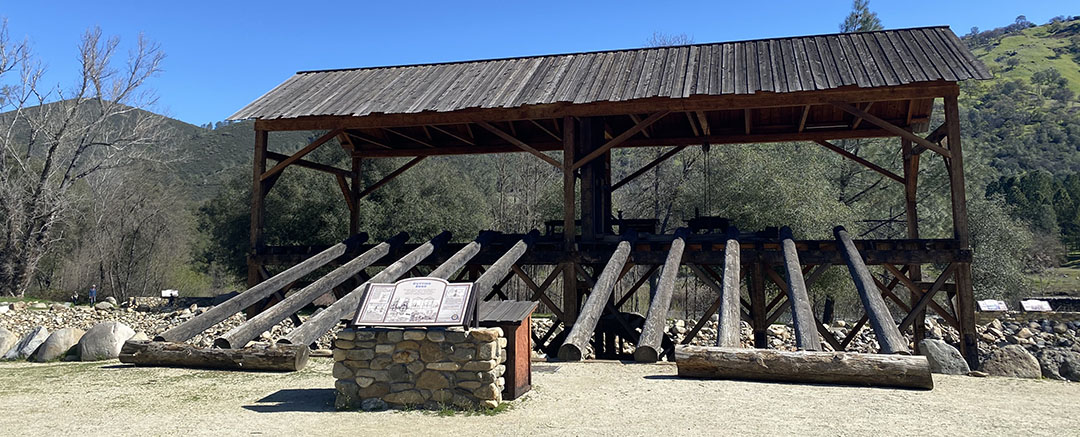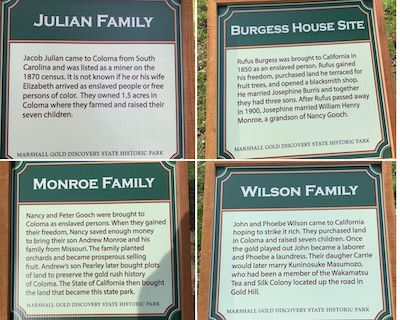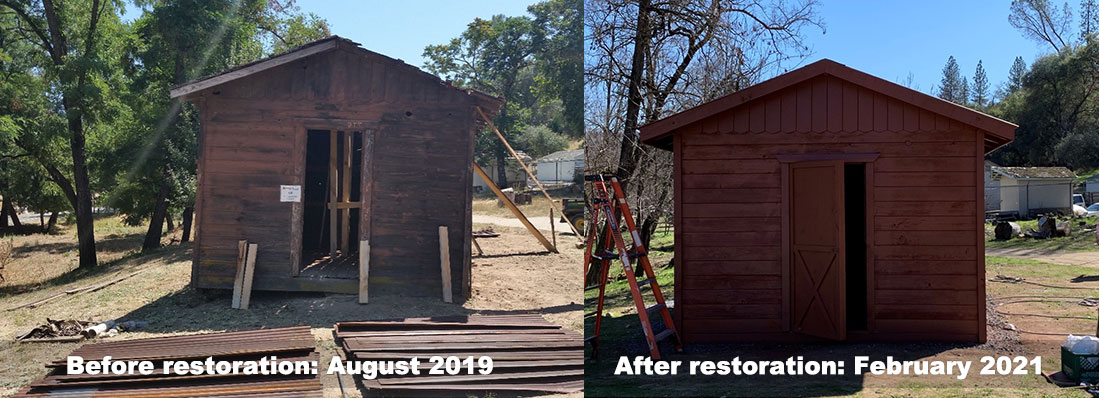Reexamining Our Past at Marshall Gold Discovery State Historic Park
In 2020, State Parks launched the Reexamining Our Past Initiative to re-examine place names, monuments, and interpretations throughout the State Park System through a modern lens.
The effort to tell a more inclusive story at Marshall Gold Discovery State Historic Park (MGDSHP) has been in the works for many years, well before this initiative was launched. At the state historic park, State Parks is expanding its interpretation beyond what was once a narrow focus on memorializing the people and events leading up to the gold discovery and its immediate aftermath. Today’s efforts involve engaging in formal government-to-government tribal consultations, conducting archival research, and meeting with families whose history is connected to the Coloma Valley. State Parks is committed to broadening the historical context and bringing forward those stories that were too often overlooked or marginalized in interpretation program and exhibits.

Below is a list of projects and research at MGDSHP that support the Reexamining Our Past Initiative:
- The newest exhibits in the Gold Discovery Museum include interpretation of the contributions of African Americans to the history of Coloma Valley.
- In 2018, the structurally unsafe, 1960s-constructed Sutter Mill replica was demolished, and a new sawmill exhibit was built nearer the site of the 1848 historic mill and its tailrace where gold was discovered. The new gold discovery trail loop and Sutter Mill exhibit encourage visitors to examine an area of the park that is steeped in contributions from African American families who lived and prospered in Coloma through gold mining, agriculture, blacksmithing, and other business enterprises.
- Interpretive panels were developed to identify parcels historically owned by African American families. The panels highlight the families’ history, accomplishments, and contributions to the community of Coloma, including interpretation of the site of the historic ‘African Church’ that was located on land between the historic Burgess and Monroe properties.

- Further scholarly research is warranted on the Emmanuel Church to better understand the various religious congregations and town buildings that were used for services in the early decades of Coloma’s founding. Historic newspaper articles are shedding light on the names of appointed clergy, as well as dates and locations where services were held in Coloma and the surrounding communities. To learn more about the history of the Emmanuel Church and other historic properties once owned by African American families in Coloma, please visit this link.
- Completed restoration of the historic Monroe Orchard shed now allows for a secured place to store tools and equipment dedicated for use in reviving and maintaining the historic orchard trees located on parcels once owned by the Burgess and Monroe families.

- Research on the history of State Parks’ acquisition of properties that now make up MGDSHP is on-going and includes examination of the records related to condemnation hearings regarding several properties once owned by the Burgess and Monroe families.
- It was Pearley Monroe’s vision and foresight that protected the gold discovery site. Interpretation is being developed to acknowledge and share the story of the significant contributions of the Burgess and Monroe families to protect and preserve the gold discovery site.
- On Feb. 11, 2022, State Parks and its partners celebrated the grand opening of the Gam Saan Trail which translates to Gold Mountain in Chinese. This trail is a connector trail from El Dorado County’s Hennigsen Lotus County Park in Lotus, CA to MGDSHP’s Monroe Ridge Trail in Coloma, CA. The naming of the trail reflects the trail going through an area once used by Chinese miners to bury those people who passed through this life. To learn more, view our press release.
State Parks looks forward to continuing its engagement with Tribal Nations, historians and scholars, subject matter experts, community members, stakeholders, and the public. Ideas shared during these meetings include highlighting family properties with interpretive signage and establishing in-person stakeholder meetings to further discuss specific topics related to all stories within the Coloma Valley.
